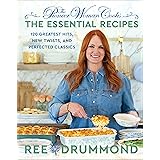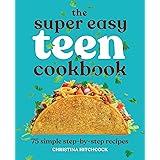Choosing the
Understanding Common Bread Ingredients
Many popular breads contain questionable ingredients. White breads, for instance, offer little nutritional value. They are made from refined flour, called maida in some regions. This refining process strips away vital nutrients. Maida lacks fiber, vitamins, and minerals. It can cause blood sugar spikes. This is detrimental for long-term health.
Refined vegetable oils are also common. These oils are often highly processed. They can contribute to inflammation in the body. Furthermore, many breads include added sugars. These sugars provide empty calories. They can lead to weight gain and other health issues. Preservatives and thickeners are also standard additions. These artificial ingredients extend shelf life. However, they may have unknown long-term health impacts.
The “Brown Bread” Misconception
The video correctly points out a major food industry trick. Many brown breads are not healthy. They appear wholesome due to their color. However, their primary ingredient is still refined wheat flour or maida. Manufacturers add molasses and caramel coloring. These give the bread a darker hue. This creates the illusion of health. It is a widespread marketing “scam.”
Always read the ingredient list carefully. The Food Safety and Standards Authority of India (FSSAI) guidelines state a rule. The first ingredient listed makes up the highest percentage. If “maida” or “refined wheat flour” is first, avoid that bread. It means you are essentially buying white bread. Its brown color is simply cosmetic. Do not fall for clever packaging or deceptive names.
What Defines a Truly Nutritious Bread?
A truly
Genuine whole grain bread often has a dense texture. It might also look slightly coarser. Ingredients should be minimal and recognizable. Look for water, yeast, salt, and whole grain flour. Avoid breads with a long list of unfamiliar names. These are often indicators of processed additives. Simple is always better when it comes to bread ingredients.
Key Ingredients to Seek Out
Prioritize specific ingredients for better health. Your bread should feature whole grains prominently. Examples include whole wheat, oats, barley, or rye. Seeds like flax, chia, or sunflower are also excellent additions. They add healthy fats and extra fiber. Sprouted grains offer enhanced digestibility. They also increase nutrient absorption. Sourdough bread is another great option. Its fermentation process can improve gut health.
Conversely, be vigilant about undesirable additives. Watch out for high fructose corn syrup. Avoid artificial sweeteners too. Partially hydrogenated oils are another red flag. These often contain unhealthy trans fats. Aim for breads that prioritize natural ingredients. They should have a clear and simple ingredient panel. Make informed choices for your wellbeing.
The Benefits of Real Whole Grains
Consuming real whole grains offers many health advantages. Fiber is abundant in whole grains. It aids digestion and promotes gut health. Fiber also helps you feel full. This can assist with weight management. Whole grains provide sustained energy. They prevent the energy crashes linked to refined carbohydrates. This means more stable energy levels throughout the day.
Moreover, whole grains are packed with nutrients. They contain B vitamins, magnesium, and iron. These are crucial for overall bodily functions. Regular consumption of whole grains may reduce risk. It can lower the chances of heart disease and type 2 diabetes. Choosing whole grain bread is a simple yet powerful step. It significantly boosts your daily nutritional intake.
Making Your Own Bread: The Ultimate Solution
The video’s suggestion is excellent: make bread at home. This is the only way to guarantee 100% clean bread. You control every single ingredient. This eliminates hidden sugars and unhealthy oils. You can avoid all artificial preservatives. Homemade bread is also often fresher. It tastes much better than store-bought options. Plus, baking your own bread can be a rewarding experience.
You can experiment with various flours. Try whole wheat, oat flour, or even millet. Add nuts and seeds for extra nutrition. Consider making sourdough for gut health benefits. Baking bread at home is easier than many people think. Many simple recipes exist online. It ensures you always have truly











